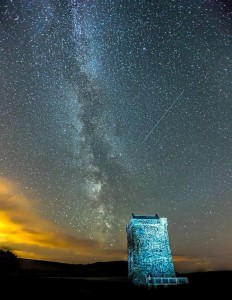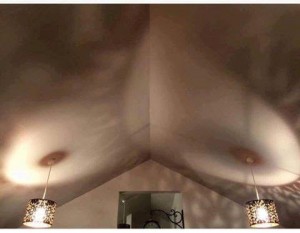I wonder was this accidental or intended?
Author: admin
Pollution has been causing springtime to come early
Artificial lighting has been causing springtime to come early, with trees bursting into leaf a week earlier in areas with more light pollution, scientists have found.

Researchers at the University of Exeter compared the amount of artificial night-time light across the country and the date at which new leaves first appeared on trees such as sycamore, oak, ash and beech.
The research drew on “citizen science” data from the Woodland Trust, which asks members of the public to record the signs of the changing seasons, such as bud-burst, in its Nature’s Calendar scheme.

Excluding large urban areas from the analysis showed the advance of spring was even more pronounced, the research published in the journal Proceedings of the Royal Society B, found.
This showed the early bud bursting was not simply down to the “heat-island” effect in which cities are slightly warmer than the surrounding areas.
The way the effect was seen across all areas also suggests it is not down to temperature rises, according to the study, which was a collaboration between the university and independent environmental consultants Spalding Associates, in Truro, Cornwall.

Winter moths, which feed on emerging oak leaves, could be affected, which in turn could have an impact on birds which feed on them.
Dr Kate Lewthwaite, Woodland Trust citizen science manager, said: “Analysis of Nature’s Calendar data suggests that increased urbanisation is continuing to put pressure on the natural world, in ways that we could not have foreseen.
“As the seasons become less and less predictable, our native wildlife may struggle to keep up with fluctuations that affect habitats and food sources.
“Hopefully this research will lead to new thinking on how to tackle such issues, and will help influence future development decisions.”
Source: Irish Examiner, to read click here.
LED Flicker

Around half of domestic and office LEDs have been found to have higher flicker rates than alternative sources, a report by the Society of Light and Lighting has revealed.
Those in procurement need to be very careful to include low flicker requirements in their specifications, and all specifiers need to be aware that if LED products are substituted by contractors or suppliers then flicker needs to be considered.
The SLL report also says that specifiers of LED lighting should similarly be wary of cool colour temperatures. ‘Other studies have shown that blue light can mimic daylight and confuse the brains of humans and animals into delaying melatonin production, potentially disrupting the sleep and the circadian cycle’. The report concludes that designers should therefore avoid LEDs with a high Correlated Colour Temperature (CCT). LEDs in streetlights should be diffused or recessed to reduce dazzle.
The report – on the topic of human responses to LED lighting and produced by Public Health England – concludes that the human reaction to light sources should be a primary factor in deciding to deploy them, not just efficiency or cost.
The report was intended to provide data on the positive and negative effects of exposure to light from LED light sources.
Researchers found that LED solutions are valid energy efficient options in comparison to other available light sources, with stated performance that is generally accurate in comparison, and that none of the LEDs tested presented a risk of retinal damage with proper use.
It also concluded that designers should consider the LED as part of the whole light fixture and the environment in which it is used to determine if it is suitable – a factor that is as important as the price of the LED or its efficiency.

Cost was shown to have no significant impact on the flicker or colour rendering of the lamp, but there are potential issues surrounding LED lights which must be factored in when deciding where they should be used, and what kind of fixture is most appropriate for them.
Jeff Shaw, president-elect of the Society of Light and Lighting, told Lux Review: ‘This report is a valuable collection of data that will be extremely useful in enabling both the public and private sector to make informed choices when looking to procure LED lighting solutions and promote energy efficiency.
‘LED technology has advanced enormously in the last decade, but there are still a lot of things to consider when deciding which solution is best for you, and how to deliver it. What this report highlights is the need to consult a properly trained and qualified designer or engineer using the latest guidance to get the most out of an LED solution, and to ensure it is the best choice for people and the environment.’
Source: Lux Review 19th/May/2016
Dark sky at night is Mayo’s delight
Ballycroy National Park & Wild Nephin Wilderness named Ireland’s first International Dark Sky Park

Mayo has been awarded a glittering new string to its tourism bow – the stars above. The International Dark-Sky Association (IDA) has granted Gold-Tier International Dark Sky Park status to Ballycroy National Park & Wild Nephin Wilderness, to be jointly recognised as Mayo International Dark Sky Park, it was announced today (Thursday).
A Gold-Tier classification is an honour reserved for the most exceptional of dark skies and breathtaking nightscapes. This recognition completes the ‘360 degree experience’ that the north Mayo national park has to offer, boasting pristine beauty underfoot, all around and up above.
Ballycroy is the first national park in the country to be named an International Dark Sky Park, building on the success of Kerry’s Iveragh Peninsula, which the Arizona-based IDA named Ireland’s first International Dark Sky Reserve in 2014. The major difference lies in accessibility: the Iveragh Peninsula reserve encompasses privately owned land, whereas the Ballycroy National Park & Wild Nephin Wilderness is State-owned, offering open public access for everyone to enjoy.
“Today’s announcement is a wonderful outcome for both dark skies and economic development in rural Ireland,” IDA Executive Director J Scott Feierabend said. “County Mayo joins Kerry as a haven of natural darkness for both wildlife and human visitors alike.”
The vast Ballycroy National Park and the adjoining Wild Nephin Wilderness expands over roughly 15,000 hectares of Atlantic blanket bog, mountainous terrain and forest. Viewing sites for visiting astronomers and stargazers have been designated and graded by ease of access and facilities available. Signature viewing sites include the Claggan Mountain Boardwalk, Letterkeen Bothy and Ballycroy National Park Visitor Centre, which have excellent interpretive and parking facilities.
To get Dark-Sky recognition, an area not only needs to prove that it is sufficiently dark from an astronomy point of view, it must also engage with the wider community in nearby urban spaces through education and outreach events to raise awareness of light pollution and energy waste, and their impact on environmental issues.
The Mayo Dark-Sky designation follows a lengthy period of night-sky surveying and quality monitoring by students of Galway-Mayo Institute of Technology. Assisted by Professor Brian Espey of Trinity College Dublin’s Astrophysics Department, the research resulted in collaboration among communities in Newport, Ballycroy and Mulrannny, together with Ballycroy National Park, Coillte Forestry, Mayo County Council, Mayo South West Development and Galway Astronomy Club. The group formed the Friends of Mayo Dark-Skies steering committee and submitted the application for Dark Sky status earlier this year.
“We are thrilled with the award. The project has been embraced by so many parties and is the first collaboration of its kind between a National Park, Coillte and surrounding communities,” project manager Georgia MacMillan explained. “Our nightscapes are inspirational and worth protecting for future generations. It’s hoped that achieving this award will not only showcase the area for the growing market of astro-tourism, but also raise awareness of the impact of light pollution on our environment and biodiversity.”
Mayo County Council has committed to dark-sky friendly lighting in the area, and is working with the Friends of Mayo Dark-Skies group to further reduce light pollution where possible.
The Mayo International Dark Sky Park already has some exciting events planned for the coming months, including The Mayo Dark-Sky Festival, slated to be held from October 28 to 30.
In a serendipitous coincidence, today’s announcement came during a Mayo Dark Skies open day for business and tourism providers. Ballycroy Visitor Centre hosted a range of expert speakers, who spoke to those gathered about the benefits and opportunities that Dark Sky recognition would bring. It seems the Dark Sky Park award was written in the stars.
Source: Mayo News (Ciara Moynihan)
